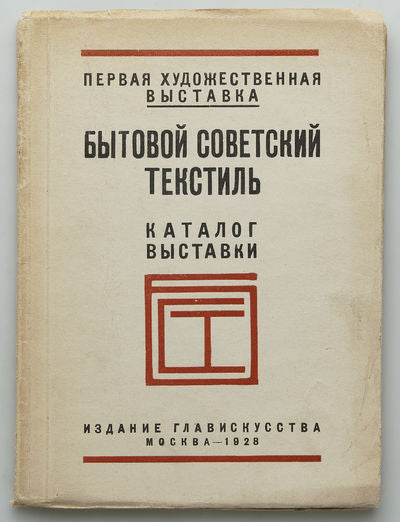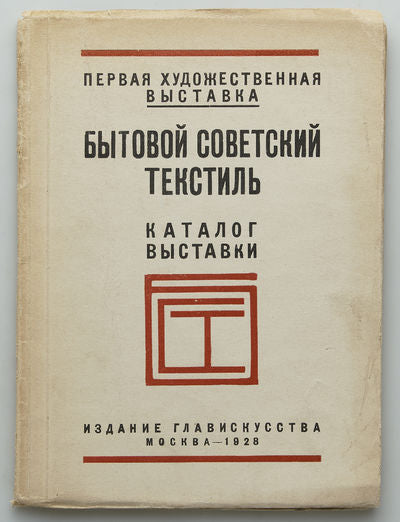Soviet Domestic Textiles: Exhibition Catalog. Rare catalog of the first textile exhibition.
Soviet Domestic Textiles: Exhibition Catalog. Rare catalog of the first textile exhibition.
Couldn't load pickup availability
[Soviet Domestic Textiles: Exhibition Catalog]. Bytovoi Sovetskii Tekstil: Katalog vystavki.
Preface by A. Fedorov-Davydov.
Moskva, Izdanie Glaviskusstva, 1928.
12mo, 88 pp.
In original pictorial wrappers.
In good condition, overall light wear, some faint browning, owner mark to title page.
One of 1 000 copies printed.
After the Civil War, there was a pressing need for new, functional clothing suitable for various occasions, such as industrial workwear, sporting garments, and specialized labor uniforms. As a result, the textile industry became one of the most successful sectors in the Soviet socialist economy.
In October 1928, Moscow hosted its first art exhibition dedicated to Soviet domestic textiles. The exhibitors included textile factories and their designers, as well as schools, students, and faculty members.
Female artist-designers played a significant role in promoting productivism, scientific design, and manufacturing. Notable participants in the exhibition included Lyudmila Mayakovskaya (1884-1972), a textile designer and pioneer of the 'aerograph' technique of textile airbrushing, who was also the elder sister of the poet Vladimir Mayakovsky, and Varvara Stepanova (1894-1958), an artist and wife of Alexander Rodchenko. Stepanova was particularly distinguished as the only avant-garde designer in textiles at the time with formal industrial design training, and she won a prize for her work at the exhibition.
The exhibition marked a 'small revolution' in textile design, shifting from traditional Parisian patterns (such as floral designs, historical depictions, and wildlife) to universal geometric patterns and thematic graphics in a propaganda style. The primary goal was to establish a central national design house. However, this innovative design approach did not align with Soviet everyday life, leading to a lowering of standards to better match public tastes. Consequently, in 1933, the industry was simplified following the order 'Inadmissibility of the Goods Produced by a Number of Fabric Enterprises Using Poor and Inappropriate Design', resulting in the loss of this unique design approach.
OCLC locates two copies of this edition: in the University College London Library and the Getty Research Institute.


